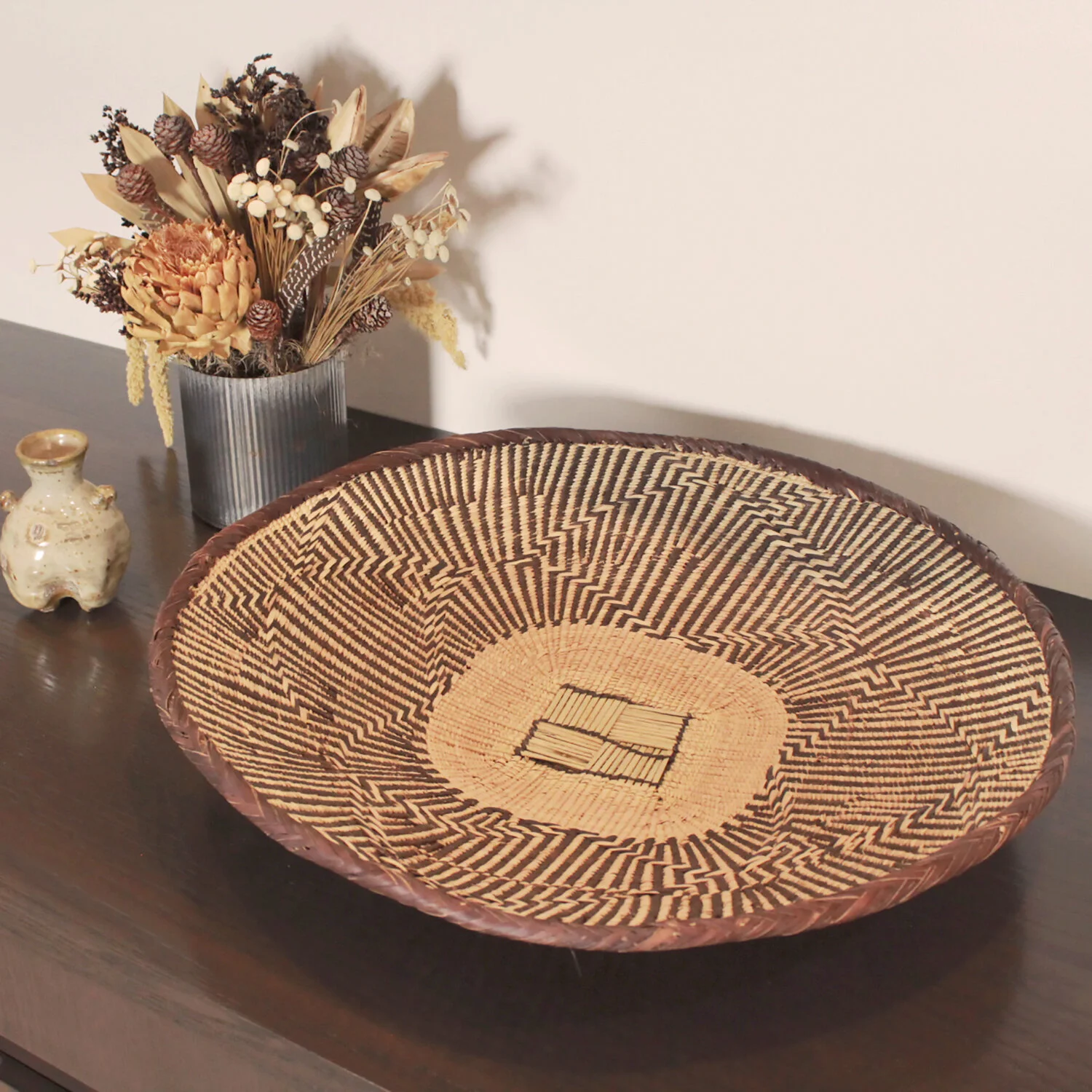Patterns from Zimbabwe
In a nation where human settlements date back 100,000 years, when cave paintings and arrowheads were most prevalent, Zimbabwe continues to awe us with everything from its incredible landscape to its age-old artistry and craftsmanship. This landlocked Southern African nation is highlighted by the impressive Zambezi River and Victoria Falls, known to be one of the world’s largest waterfalls. But the wildlife in Zimbabwe is equally astounding. Its rich fauna includes everything from elephants, zebras, and hippos to aardvarks, porcupines and anteaters, plus a plethora of snakes and lizards. The drier lowlands of Zimbabwe feature flora, such as massive baobab trees, while the Zambezi Valley and Eastern Highlands have everything from giant aloes to palm trees, wildflowers and everything in between. Needless to say, inspiration is abound in the natural environment, and it has inspired its people to create some of the most beautiful, intricate, and well-made baskets.
Basket weaving is a trade quite prevalent throughout Africa, but Zimbabweans use skills and mathematical sense to create intricate designs, and this is where we most often see pattern emerge. The BaTonga women, who live in the remote Binga district of Northern Zimbabwe, weave the baskets from natural materials, such as wild grasses, reeds, and ilala palm fronds. The colors are almost always neutral, either dyed with tree bark and roots or left undyed. Shallow baskets, referred to as Binga (or Tonga) baskets are used for winnowing grains, like maize and sorghum. Larger styles, known as Nongo baskets are used for carrying and storing the grain and are shaped like traditional clay cooking pots. These one-of-a-kind, handmade baskets are also constructed with ilala palms and feature similar color schemes.
The baskets all have a very distinct style that starts from a square shaped lattice base in a herringbone pattern. This base, along with the traditional hem, referred to as kano kanziva (or ‘doves’ footprints’) forms a sturdy bottom for the basket with which the fibers then radiate outward forming the bowl. Baskets are either finished with a brown, dyed herringbone lip or a flat checked edge, known as the ‘leopard design rim.’
“The wisdom of life consists in the elimination of non-essentials.”
Now the really interesting part comes into play with the patterns each BaTonga weaver chooses to use. Though the patterns are all symmetrical and the colors remain simple, the designs are reflections of the individual weaver and the inspiration she takes from her natural surroundings. They can be as simple as stripes or an intricate geometric design. The symbols found in the dramatic patterns are usually reflective of the surrounding animals. Zebra stripes are often used to signify the animals’ historical importance to their communities, long ago providing meat and skins. Other patterns used frequently are that of the spider’s web, lightning bolt, and butterfly wings. We also see a pattern of circular stripes surrounding the center lattice, which is known as the Puff Adder and reflects the venomous viper snake of the same name that is responsible for most of the snakebite fatalities in all of Africa.
So as we look into this highly skilled community in a lesser known corner of the world, we can not only revel in the skill and technique used to create such astounding baskets but use them as inspiration for our own spaces. The baskets of the BaTonga women illustrate the beauty of something in its most natural and utilitarian form with simple and meaningful symbols. Often we add things to our homes that are aesthetically pleasing but not necessarily useful or created to reflect our values and surroundings. Let’s take inspiration from the talented BaTonga and add simple and useful beauty with intention to our spaces and our homes.











